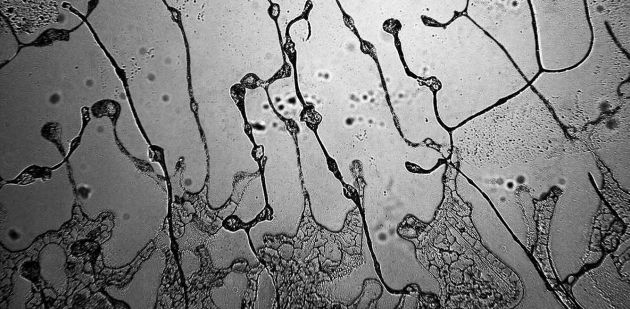Blood and urine are not the only bodily fluids that can be used to form a diagnosis. New methods of medical screening are proving their worth.

"We’ll take a blood sample.” When faced with a number of symptoms, doctors look to samples of haemoglobin or urine for information to establish their diagnosis. “These two bodily fluids provide a wealth of precious information on a patient’s state of health, revealing biochemical markers, antibodies, proteins, and so on,” says Natacha Turck, assistant lecturer with the Department of Structural Biology at the University of Geneva. However scientists are now looking into other bodily substances to perform their bio--logical analyses. “Blood and urine tests have their limits. Urine is very rich in salt and crystals, which makes it difficult to analyse protein biomarkers. And blood is full of proteins such as albumin, which hides the fainter traces left by other indicators.”
In the future, screening may very well move beyond the breath into the eyes or under the arms of patients. Sweat and tears are some of the most telling bodily fluids.
Your breath speaks volumes
One of the most encouraging fields of research, volatile organic compounds (VOCs) – substances in the air that humans can ingest by breathing – is without a doubt the most popular. Some procedures are already commonplace, in particular in gastroenterology, where they are used to identify the bacteria present in the digestive system. In these tests, the patient ingests a specific amount of various sugars (lactose, fructose, etc.) that are broken down in the digestive tract. Then traces of these elements found in the hydrogen exhaled are compared with the patient’s base reading to detect any abnormality. The urea breath test is the most common and is used to diagnose the presence of Helicobacter pylori, the bacteria mainly responsible for gastric and duodenal ulcers.
What’s next? Researchers hope that they can use these methods to diagnose serious diseases earlier. The first symptoms, which closely resemble those of minor health issues, can be difficult to catch in time, as in the case of stomach or lung cancer, hepatic diseases, and others.
This is crucial in oncology, where early diagnosis can make all the difference.
These tests offer vast potential, with more and more studies being conducted worldwide. They aim to identify and list
the relevant biomarkers and associate a given pathology with a given variation in chemical make-up detected by the electronic “noses”. Tecnalia, one of the largest private research groups in Spain, is developing biosensors “capable of detecting the presence of tumor markers of lung cancer in exhaled breath,” explains Eva Ibanez, head of the Medical Innovation department. “In parallel, we’ve increased the sensitivity of the devices.” After collec-ting breath samples from patients at a partner hospital, Tecnalia staff compared them with breath samples from healthy people to determine the most representative compounds to act as markers.

Based in Los Angeles, Rose-Lynn Fisher is a photographer who explores the links between art and science. Pictured here are her works “Tears for those who yearn for liberation” and “Tears of ending and beginning”, from her series on the “topography of tears”.
Sweat and tears
In the future, screening may very well move beyond the breath into the eyes or under the arms of patients. Sweat and tears are some of the most telling bodily fluids. For years, Natacha Turck has been working on spotting protein biomarkers as well as parasites present in tears. They are likely to detect a viral infection, determine a medical diagnosis, identify the risk of a stroke or improve
the monitoring of diseases such as multiple sclerosis.
“These tests have the advantage of being painless, inexpensive, fast and practical. All it requires is placing a blotter near the cornea to collect a sample,” says Natacha Turck. And sweat? It takes slightly longer but is also practical. By wearing a simple patch for a few days, the required amount of perspiration is collected to analyse
the metabolic markers that can provide indications as to the state of health of cancer patients. And adjust the therapeutic treatment accordingly.
“For patients who have been subjected to lumbar punctures on a regular basis, the advantage is clear. And, financially speaking, healthcare systems could also gain from using these methods,” states Natacha Turck. As for VOCs, it’s
off to a great start. Now all that remains is the long process of conducting clinical trials to extend the applications of these new biological analyses. “This is just the beginning, but the concrete applications are within reach.” Within five to ten years, tear analysis could become as useful s blood tests.
Cheap do-it-yourself biological tests now allow anyone to screen for diseases such as glycemia, cholesterol and certain cancers in their own home, rather than solely in a laboratory.
Over-the-counter availability is with-in reach, stirring debate among the medical community. Healthcare authorities hope this trend will reduce costs and administered care, but doctors are more sceptical. They fear a misuse of these kits, which could result in false positives or flawed interpretations. Similar red flags are being raised by biologist organisations and Switzerland’s Federal Office of Public Health (Office fédéral de la santé publique or OSFP), which believes that all analyses of a biological test should take place in a doctor’s office.